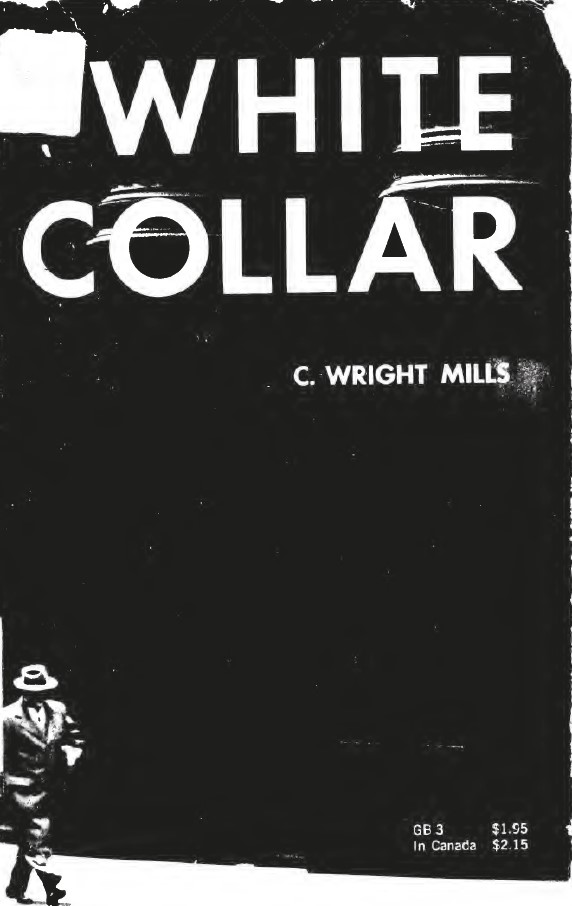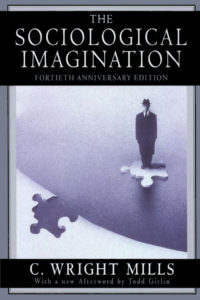Summary
This book about the new middle classes in twentieth-century U.S.A. was hailed upon its publication in 1951 as “a brilliant and illuminating book.” Since its first appearance, it has become a classic in the field and continues to find new readers.
As Horace M. Kallen wrote in The New York Times, it is “a book that persons of every level of the white-collar pyramid should read and ponder. It will alert them to their condition for their better salvation.”
After reading this clinical account of the white-collar world—now so central to the texture and feel of life in this country—Sylvia Porter said in the New York Post: “One of the most painfully thought-provoking books I’ve read in years. But only a naive Pollyanna would deny there’s a lot of truth to it, enough to force a stop, look, listen.”
The late C. Wright Mills, Professor of Sociology at Columbia University, was a leading critic of modern American civilization. He is the author of The Power Elite (GB 20), The Sociological Imagination, Power, Politics and People, and Sociology and Pragmatism: The Higher Learning in America. With H. H. Gerth, he edited and translated From Max Weber: Essays in Sociology.
Contents
ONE: OLD MIDDLE CLASSES
- The World of the Small Entrepreneur
- The Old Middle Classes
- Property, Freedom and Security
- The Self-Balancing Society
- The Transformation of Property
- The Rural Debacle
- Business Dynamics
- The Lumpen-Bourgeoisie
- The Rhetoric of Competition
- The Competitive Way of Life
- The Independent Farmer
- The Small Business Front
- Political Persistence
TWO: WHITE COLLAR WORLDS
- The New Middle Class: I
- Occupational Change
- Industrial Mechanics
- White-Collar Pyramids
- The Managerial Demiurge
- The Bureaucracies
- From the Top to the Bottom
- The Case of the Foreman
- The New Entrepreneur
- The Power of the Managers
- Three Trends
- Old Professions and New Skills
- The Professions and Bureaucracy
- The Medical World
- Lawyers
- The Professors
- Business and the Professions
- Brains, Inc.
- Four Phases
- The Bureaucratic Context
- The Ideological Demand
- The Rise of the Technician
- The Great Salesroom
- Types of Salesmen
- The Biggest Bazaar in the World
- Buyers and Floorwalkers
- The Salesgirls
Extract
The white-collar people slipped quietly into modern society. Whatever history they have had is a history without events; whatever common interests they have do not lead to unity; whatever future they have will not be of their own making. If they aspire at all, it is to a middle course at a time when no middle course is available—and hence to an illusory course in an imaginary society. Internally, they are split and fragmented; externally, they are dependent on larger forces. Even if they gained the will to act, their actions, being unorganized, would be less a movement than a tangle of unconnected contests. As a group, they do not threaten anyone; as individuals, they do not practice an independent way of life. So before an adequate idea of them could be formed, they have been taken for granted as familiar actors of the urban mass.
Yet it is to this white-collar world that one must look for much that is characteristic of twentieth-century existence. By their rise to numerical importance, the white-collar people have upset the nineteenth-century expectation that society would be divided between entrepreneurs and wage workers. By their mass way of life, they have transformed the tang and feel of the American experience. They carry, in a most revealing way, many of the psychological themes that characterize our epoch, and every general theory of the main drift has had to take account of them. For above all else, they are a new cast of actors, performing the major routines of twentieth-century society.
At the top of the white-collar world, the old captain of industry hands over his tasks to the manager of the corporation. Alongside the politician, with his string tie and ready tongue, the salaried bureaucrat—with briefcase and slide rule—rises into political view. These top managers now command hierarchies of anonymous middle managers, floorwalkers, salaried foremen, county agents, federal inspectors, and police investigators trained in the law.
Author
C. Wright Mills (1916–1962) was an influential American sociologist known for his sharp critique of power, bureaucracy, and modern society. Educated at the University of Texas and the University of Wisconsin, he later became a professor at Columbia University, where he developed his most important ideas. Mills emphasized the link between personal experience and broader social structures, a relationship he famously defined as the “sociological imagination.” His major works include The Power Elite, White Collar, and The Sociological Imagination, each challenging dominant views of American democracy and corporate authority. Mills was known for his independent, often radical perspective, his accessible writing style, and his commitment to understanding how power shapes everyday life in the twentieth century.
Book Details




